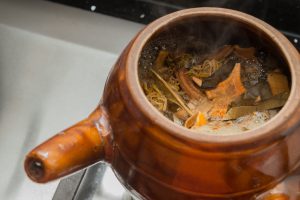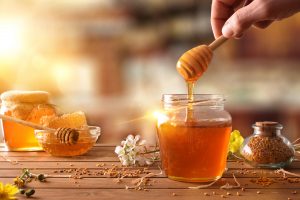Infusion, Decoction, Tincture! Oh My! June 27, 2017 – Posted in: Blog, Botanicals, Health
Are you interested in botanicals and aren’t sure what exactly they are or how to use them? Maybe you don’t know where to get started. Maybe you feel overwhelmed with all the information online about gut health and GMOs and organic vs. non-organic foods. What you do know is that you want to provide the best sources of nutrition for you and your family and still remain within your monthly food budget.
Our goal is to lift the shroud around botanicals. We want to unravel the mystery and give you straight forward answers so you have confidence with common and not so common botanicals and the ways to use them. Botanical use can seem overwhelming and intimidating, but it doesn’t have to be this way. Some of them are as easy to use as food and including them in your daily diet can add tremendous health benefits.
Here are some common terms that we use when discussing how to use botanicals:
Infusion

The easiest and most familiar example of an infusion is steeping tea leaves in water. An infusion is a quick extraction method to pull the vitamins from soft ingredients like a plant part or fruit. An infusion only takes a few minutes. The temperature of water can vary depending the soft ingredients used. For instance, a black tea calls for a hotter temperature than a white tea to make an infusion with the desired results. Too hot or steeped too long and the infusion can be negatively affected.
Decoction

A decoction is also known as a simmered tea. This extraction method is used to pulled the nutrients from hard ingredients such as bark, roots, and seeds. Decoctions require bringing the water to boiling point. Once the water reaches the desired temperature the hard ingredients need to boil for a minimum of ten minutes. The water mixture is then removed from the heat and allowed to steep for several more hours. The boiling and steeping processes reduce the volume of the water. As such, the end result is fairly concentrated and will need water or other liquid added to it prior to consumption. A great example of a decoction is Essiac tea.
Herbal Syrups

An herbal syrup preserves herbal teas. Start by decocting the roots, barks, berries, etc. Once the decoction is complete, strain the herb and measure the liquid. Return the liquid part of the decoction to the heat and add an equal amount of local Raw Honey* to the decoction. Slowly simmer the mixture until the honey completely dissolves. Let it cool and then store it in air tight containers.
*Raw Honey is unheated and unpasteurized. Since it is untreated with these preservation methods (commonly used to extend shelf life for commercially available honey), Raw Honey keeps all of the benefits nature intended for it to have including: bee pollen, propolis, and beeswax.
Tinctures

Tinctures are liquid extracts that use a potent solvent. A commonly used solvent used for extraction is alcohol. Tinctures are more concentrated and require a lower amount per dose. Tinctures can vary greatly. Some tinctures give immediate result. Other tinctures, typically the ones providing nutrients, need consistent daily use to achieve the best results.
Tinctures are quick and convenient. They can be enjoyed as a tea by adding it to water or taken directly as a tincture. Tinctures when used in their potent extracted state are best taken sub-lingually (beneath the tongue).
The alcohol content is equal to what is in a ripe banana by the time the tincture is finished being made. If you need to make a tincture for a child, don’t fret over the alcohol content. The alternative is a non-alcohol tincture. These non-alcohol tinctures use vegetable glycerides. Since the alcohol acts as a preservative, the non-alcohol tinctures have a much shorter shelf life than their alcohol-based relative.





